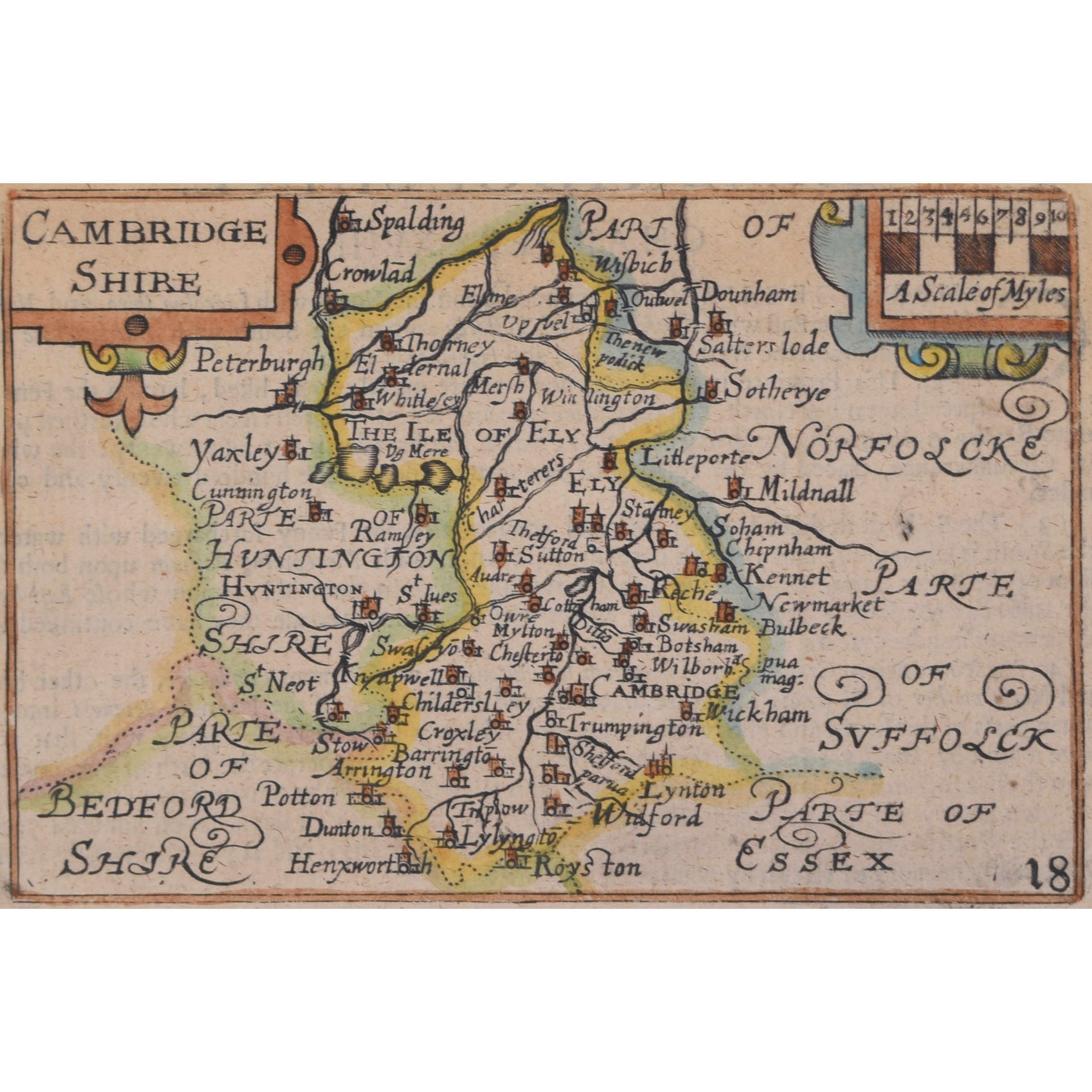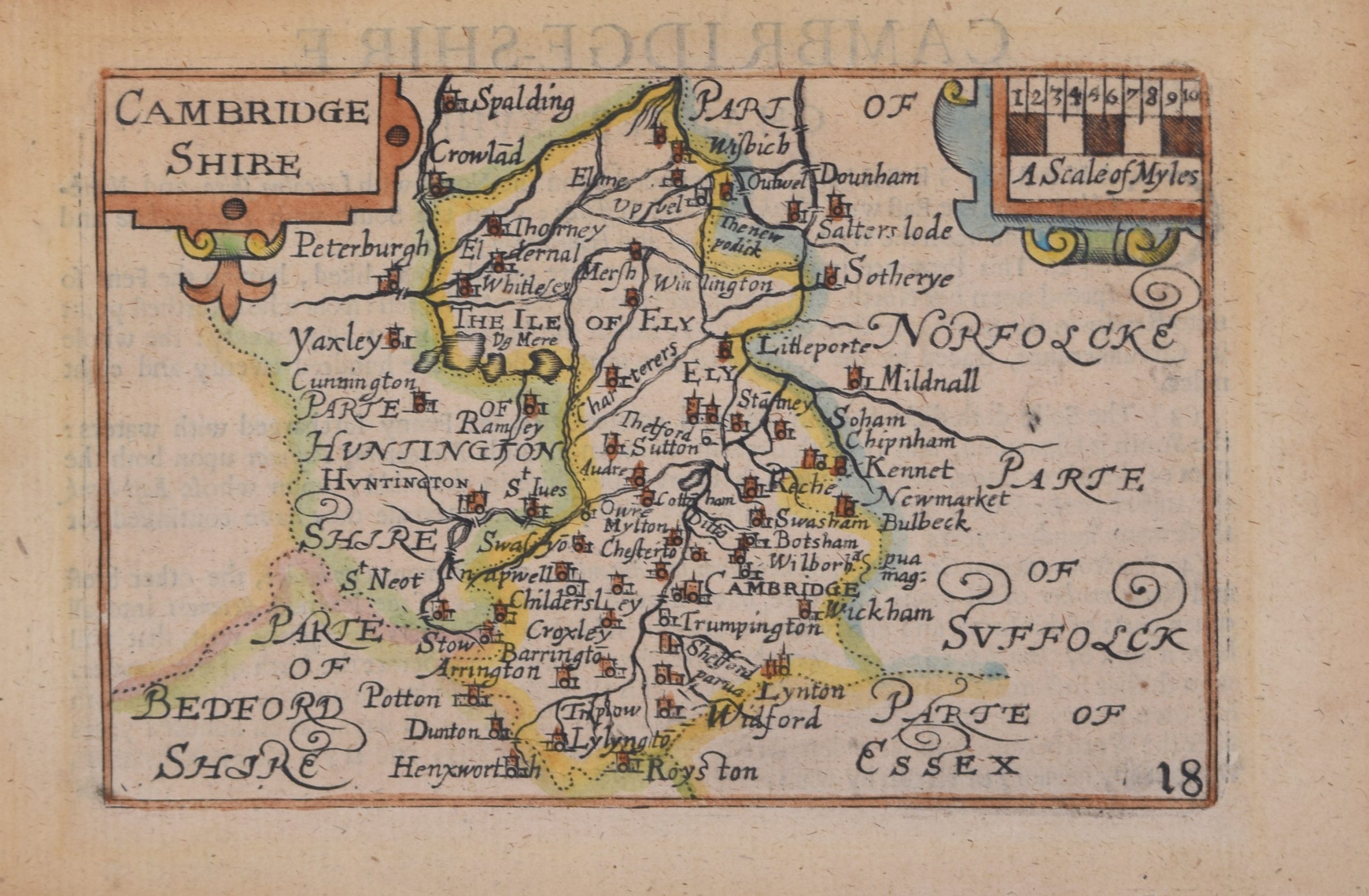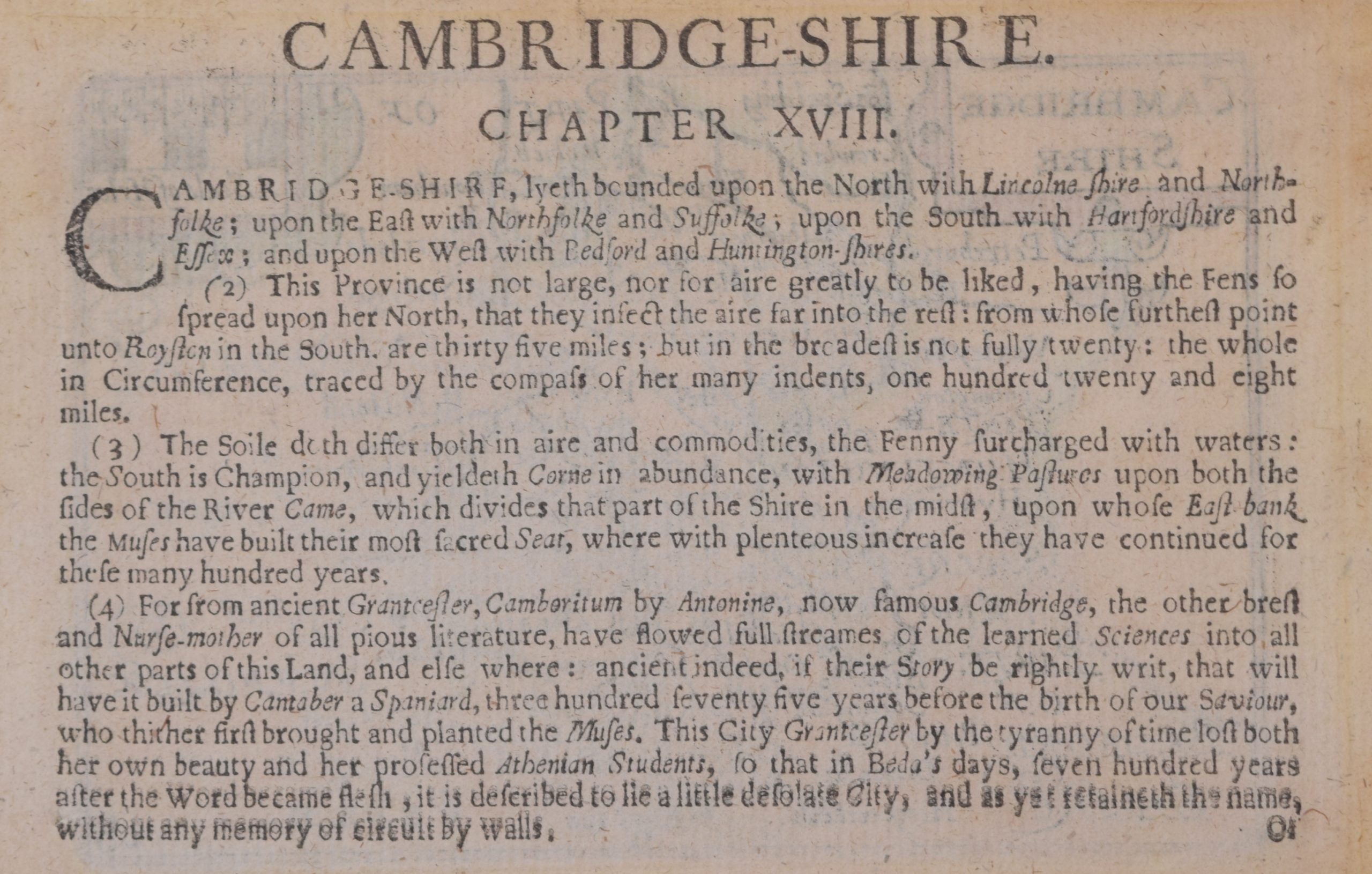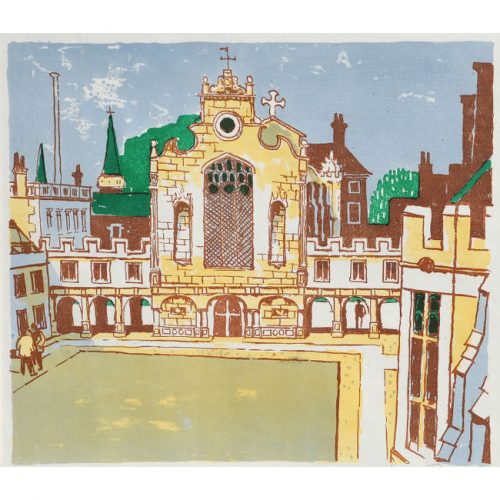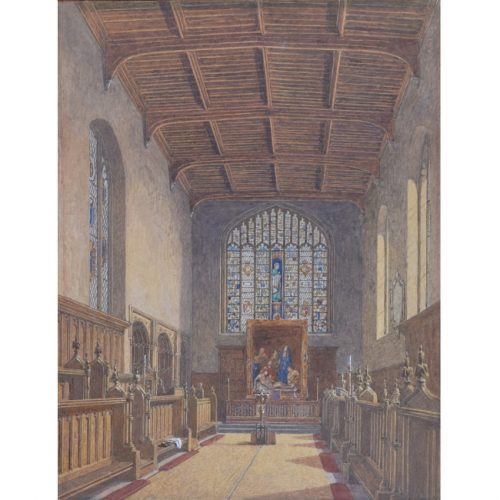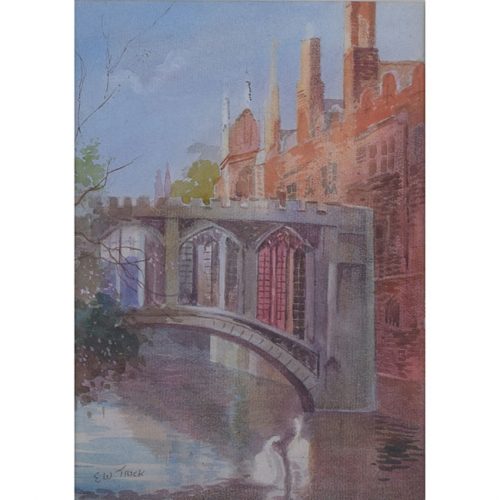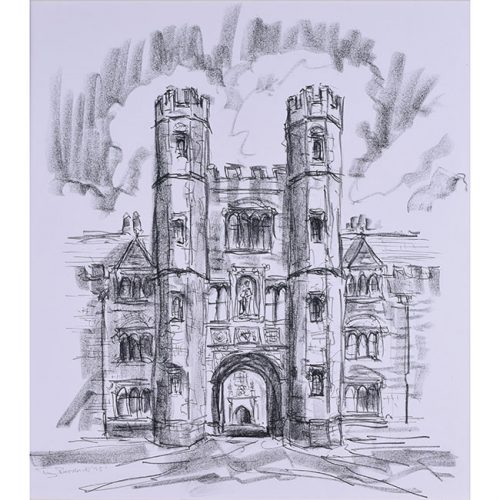Pieter van den Keere (1571 – circa 1646) after John Speed (1551 or 1552 – 1629)
Map of Cambridgeshire (1627)
Engraving
8 x 12 cm
A beautifully coloured map of Cambridgeshire, with an antique description of the county to the reverse. The map, along with many others, was published in Speed’s atlas, ‘The Theatre of the Empire of Great Britaine’, first published in 1611. This particular miniature edition of the ‘Theatre’ was published in miniature by George Humble in 1627, entitled ‘England Wales Scotland and Ireland Described and Abridged With ye Historic Relation of things worthy memory from a farr larger Voulume. Done by John Speed.’ Speed’s original map was likely engraved for this edition by Peter van den Keere. van den Keere’s maps soon came to be known as “Miniature Speeds”.
John Speed was an English cartographer, chronologer and historian. The son of a citizen and Merchant Taylor in London, he rose from his family occupation to accept the task of drawing together and revising the histories, topographies and maps of the Kingdoms of Great Britain as an exposition of the union of their monarchies in the person of King James I and VI. He accomplished this with remarkable success, with the support and assistance of the leading antiquarian scholars of his generation. He drew upon and improved the shire maps of Christopher Saxton, John Norden and others, being the first to incorporate the hundred-boundaries into them, and he was the surveyor and originator of many of the town or city plans inset within them. His work helped to define early modern concepts of British national identity. His Biblical genealogies were also formally associated with the first edition of the King James Bible. He is among the most famous of English mapmakers.
George Humble (1572 – 1640) was an English publisher, known for his publication of John Speed’s ‘The theatre of the empire of Great Britaine,’ the first comprehensive atlas depicting the British Isles, and his later ‘A prospect of the most famous parts of the World,’ the first English world atlas.
Pieter van den Keere was a Flemish engraver, publisher, and globe maker who worked in England and the Dutch Republic.
Condition: generally very good; some age toning.
If you’d like to know more, please email info@manningfineart.co.uk or call us on 07929 749056.

